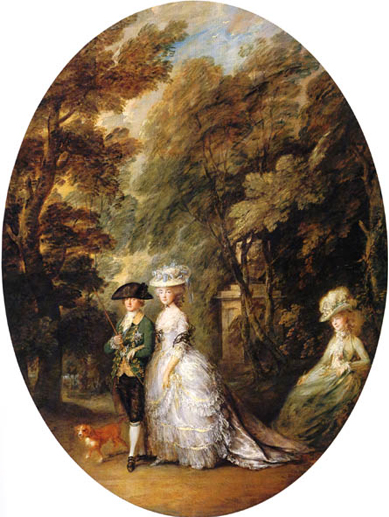Reynolds and Gainsborough, divided by technique and temperament, were united in their discontent with the narrow scope of 18th-century English portraiture. Andrew Gra-ham-Dixon detects a secret spirit of rebelliousness in two paintings on show at the Queen's Gallery, London
''Damn gentlemen,'' he once wrote to a friend. ''There is not such a set of enemies to a real artist in the world as they are, if not kept at a proper distance. They think (and so may you for a while) that they reward your merit by their company and notice; but I who blow away all the chaff and by God in their eyes too if they don't stand clear, know that they have but one part looking at, and that is their purse . . .'' Few society portrait painters have been as lacking in servility as Thomas Gainsborough.
His portrait of Henry, Duke of Cumberland with the Duchess of Cumberland and Lady Elizabeth Luttrell, currently on view in ''Gainsborough and Reynolds'', a small but nutritious exhibition at the Queen's Gallery, is among other things a masterpiece of disguised impertinence. Three aloof aristocrats and a panting lapdog find themselves in a bower of bliss of the artist's devising, a sylvan twilit glade containing an urn on a plinth. They are surrounded by tall and fantastical trees like madly outsize sprigs of parsley, and overhung by foliage painted so quickly and fluidly that it looks more liquid than solid. It forms green cascades and waterfalls which tumble down from a gold and blue evening sky where a pair of tiny white birds, each formed from just two brushtrokes, hover. But all is not entirely harmonious in Gainsborough's earthly paradise. The people who inhabit it strike a false note, as if they have accidentally wandered into the wrong sort...


